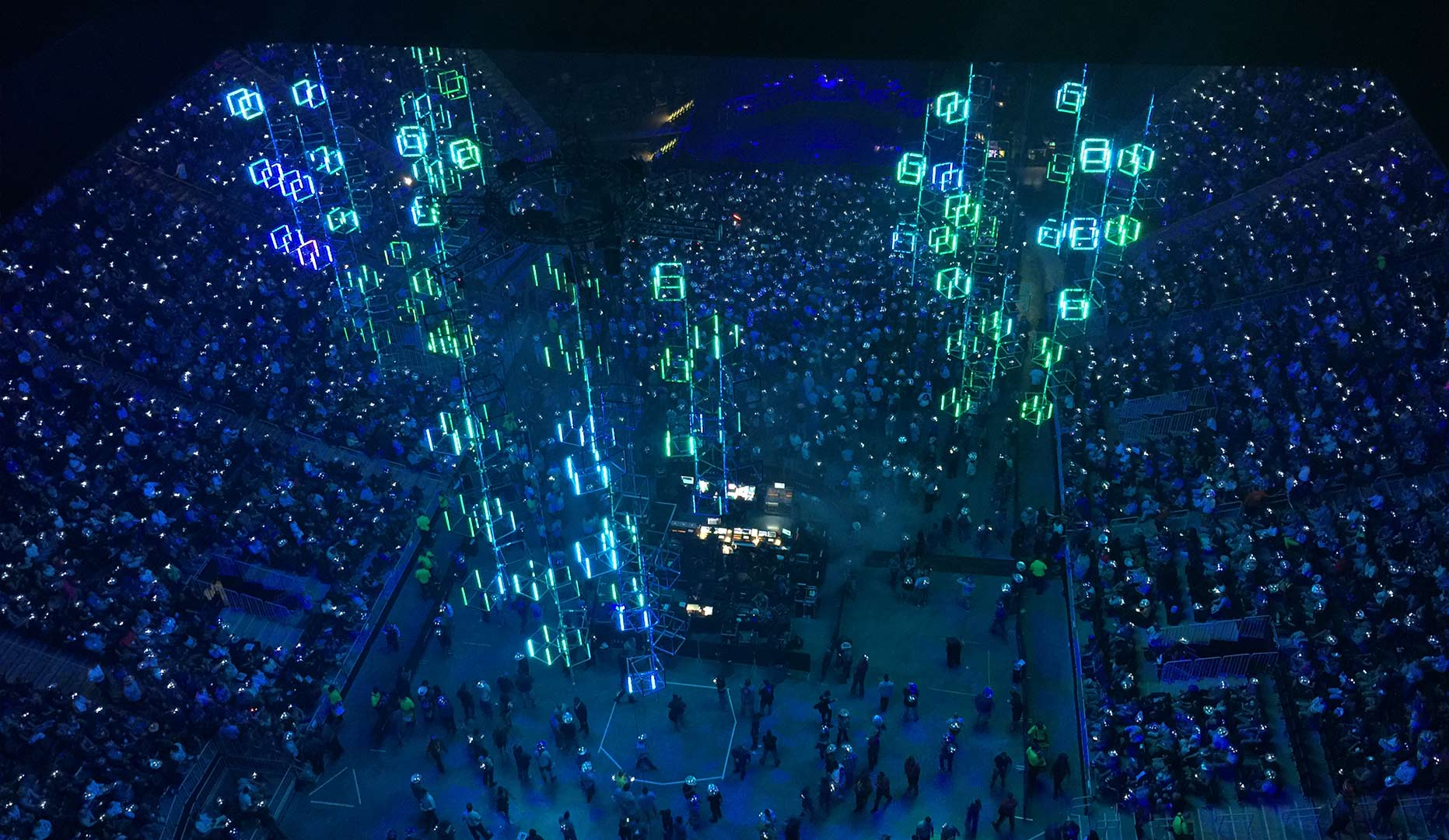Symmetry Labs - Case Study
"Systems design for navigating ambiguity"
The Challenge
The Sugar Cubes started as an art project in entertainment lighting. Out of it came technology tools for mesmerizing lighting content, which we believe will be at the core of a world of ubiquitous programmable lighting.
When we turned the project into a company, we had very little money and were living from client to client. Our money-making inventory, made from a prototype design, was on its last legs. After initial fundraising attempts, it was clear we were going to bootstrap our business for awhile in the entertainment industry. So I had to solve the inventory problem immediately.
Producing more of the old design would just land us in the same cycle. But investing money and time in a product development cycle was tricky. It had to be quick to replace our production inventory. Additionally, there were many pivots we might need to make as a business, between entertainment, architectural, and consumer, each with a very different product. Who knew if we would have the time and resources to do a full development cycle each time? On top of this, our product involved many typically separate disciplines (human experience to deep technical fields), with strong cross-discipline constraints. And I did not have the resources to hire an expert for each.
In these challenges I saw the opportunity to engage all sides of me in a single project. Could I carefully balance many diverse constraints and opportunities to create single, multi-faceted product architecture for most potential markets?
The Approach
My approach to ambiguity is to identify the biggest risks and opportunities, go crazy (and get authentic) imagining all possible paths to build intuition, then craft roadmaps that delicately balance optionality and focus while removing risk. And assume at any point things might go wildly differently than you expect.
Design Dimensions and Tensions
The core of my process is getting intimate with the design tensions unique to a situation. The way one idea will simultaneously make something easier and another thing more difficult. Many people call these tradeoffs. I call them tensions because for me it frames them as stored potential I can use to create, rather than an obstacle I need to work around.
For Symmetry, some design tensions became the focal points of subsystem modularity (or how to create optionality to hold and address the tensions in different situations). Others became the inspiration for game-changing technology that eliminated them completely.
Embed that knowledge and process into universal tools that can be leveraged across products. Deemphasize all else.
Design Tension | This look <=> That look
Every customer and market has its own visual sensibilities and experience needs. How could a product be versatile enough to satisfy all potential customers?
Design Dimension | Macroscopic Form and Structural Texture
Design Dimension | Qualities of light and its absence
Drawing from brainstorms of wildest dreams with our team and clients, these design dimensions emerged. Reconfigurability around these dimensions became the core of the architecture. Identify "off-the-shelf" opportunities for wildly different looks (modular structural elements, clamps and truss, diffusers).
Design Tension | Infinitely customizable <=> Effortless setup
A product requires more setup effort as its reconfigurability increases. In the entertainment industry we found the limit on setup efforts was one of the greatest constraints on creativity. We created hardware and software tools to reduce those efforts. Out of a blue sky brainstorm fell a silver bullet.
Technology to eliminate design tension
Our system's visual richness is made possible by our software's 3D spatial content. For this to work, the software needs to know how the lights are arranged in space. The more irregular / unpredictable the structure, the more sophisticated and time-consuming the effort to configure the software. This constraint a fundamental limit on creative flexibility. So we used computer vision to eliminate it entirely.
Auto-mapping uses an everyday mobile phone to give our software eyes to instantly discover how LEDs are arranged in space. It is a unique and incredibly powerful tool for design and production professionals, and makes our 3D animation software instantly accessible to non-technical consumers.
Design Tension | Universal <=> Economics of specialization
There are many different technologies and approaches to lighting, both across markets and within a single market, usually stemming from a wide variety of technical requirements and costs. Specialists in each market spend most of their time "configuring" systems for specific installations.
Modular controller with embedded intelligence for all lighting
I designed the capability to meet these many needs into a single modular component architecture and embedded intelligence. Cost could scale with need, and the embedded intelligence allows a single physical architecture to adapt to different needs.
This functionality enabled us to explore providing our controller to home and architectural LED OEMs to explore other markets.








